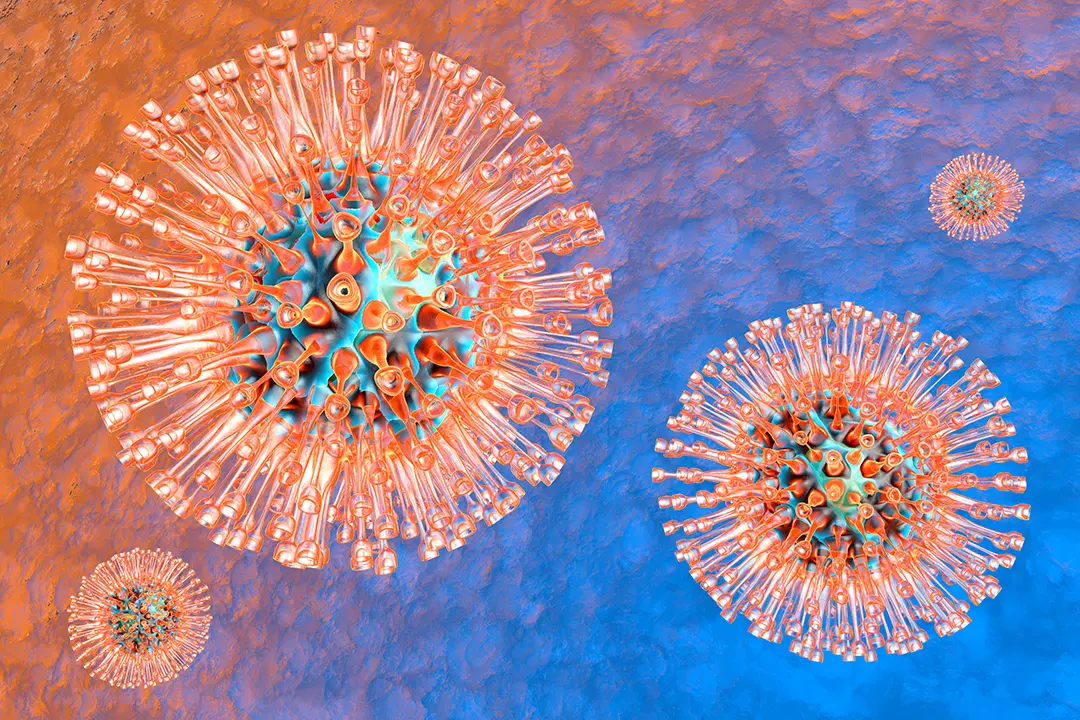Herpes Simplex Virus (HSV)

What You Actually Need to Know About HSV
Herpes simplex virus comes in two main strains, HSV-1 and HSV-2. Most people have heard the outdated terms “oral herpes” and “genital herpes,” but these labels are no longer accurate. Either strain can infect the mouth, the genitals or the anus. Both strains can be transmitted through oral sex, kissing, skin-to-skin contact and, in rare cases, during childbirth.
Understanding HSV matters because it is one of the most common viral infections in the world, yet also one of the most misunderstood.
⸻
Window and Incubation Period
Herpes symptoms, when they appear at all, typically show up four to seven days after exposure, though the range can extend from 2 to 12 days. A large percentage of people never develop noticeable symptoms, which is why HSV often goes undiagnosed for years.
Window Period for IgG Blood Tests (Antibodies)
The IgG blood test does not follow the same timeline.
IgG antibodies can take weeks to months to appear.
Most people seroconvert by 8–12 weeks, but some take up to 16 weeks or longer, and a small number may never produce detectable IgG despite infection.
⸻
Symptoms When They Occur
HSV symptoms vary widely:
- Oral HSV can cause cold sores around the lips or inside the mouth.
- Genital HSV may cause blisters, itching, burning, tingling or small ulcers.
- Recurrent outbreaks tend to be milder and heal faster than the first episode.
Many people with HSV-1 or HSV-2 never develop symptoms. For them, the only sign of infection is a positive blood test.
⸻
Complications if Untreated
For most adults, HSV is manageable and does not cause long-term health problems. Rare complications include:
- Neonatal herpes, which is a medical emergency
- Ocular herpes, which can affect vision
- HSV meningitis or encephalitis (very rare)
The greater burden of HSV is emotional rather than medical, due to fear and stigma rather than health danger.
⸻
The Changing Landscape of HSV-1 and HSV-2
The way herpes spreads is changing. HSV-1 used to be a childhood infection primarily spread non-sexually. But pediatric HSV-1 has dropped by more than 30 percent over the past few decades. Children who do not get HSV-1 early are far more likely to acquire it genitally later through oral sex.
This has transformed the epidemiology of genital herpes in the United States.
In the 1990s, only about 31 percent of new genital herpes cases were caused by HSV-1.
By 2001, the number rose to 78 percent.
More recent studies show nearly 60 percent of new genital herpes today is HSV-1. Source
In other words, HSV-1 is now the leading cause of new genital herpes infections.
This is why clearer terminology matters. Someone who has genital HSV-1 (GHSV-1) does not pose a transmission risk to someone who already has oral HSV-1 (OHSV-1). You cannot acquire the same strain twice.
⸻
Understanding HSV Blood Testing
Herpes testing is not like other STI testing. The HSV IgG blood tests detect antibodies, not active virus. This means they cannot tell:
- When the infection occurred
- Where the infection is located
- Whether someone is currently contagious
- Whether symptoms will ever appear
Testing is fundamentally different from testing for chlamydia, gonorrhea or HIV.
Why Routine HSV Testing Is Not Recommended
The U.S. Preventive Services Task Force gives routine HSV-2 screening for people without symptoms a “D” rating. A “D” rating means the harms outweigh the benefits.
The reason is accuracy. IgG tests have:
- High sensitivity
- They rarely miss true infections.
- Lower specificity
- They can produce false positives, especially in people at low risk.
A simple example
Imagine 100 people are tested.
Five truly have HSV-2.
Two others receive false positives.
The test reports seven positives, but only five are real.
That means nearly one in three positive results is wrong.
This is why a single positive HSV test should never be interpreted as a final diagnosis. Follow-up testing is essential, especially when someone has no symptoms.
⸻
HSV-1 vs HSV-2: Why It Matters
Because HSV-1 is now a major cause of genital herpes, understanding strain type provides more accurate risk information. Someone with HSV-1 already cannot catch HSV-1 again. Strain-specific labels like GHSV-1 or OHSV-1 are more honest and more helpful than the vague term “genital herpes.”
⸻
Treatment
Antiviral medications such as valacyclovir reduce outbreak severity, shorten healing time and significantly reduce transmission risk. Many cases of HSV transmission could be avoided if individuals with known outbreaks used suppressive or episodic therapy.
Shameless Care clinicians prescribe and ship valacyclovir directly to your home.
⸻
How Common HSV Really Is
HSV-1 infects billions of people worldwide. In the United States, HSV-1 incidence has remained steady at around 2.8 million new infections per year for decades. HSV-2 prevalence has been slowly declining but remains common enough that positive tests need careful interpretation.
Because so many infections are silent, most people with HSV never know they have it.
⸻
The Bottom Line
Herpes is common, manageable and medically low-risk for most adults. The primary challenges are emotional, not clinical. When testing is done, it must be interpreted with nuance, follow-up and education.
If you experience symptoms such as sores or blisters, test during the outbreak.
If you need treatment, medications like valacyclovir are highly effective.
If you want support and clear guidance, Shameless Care is here to help.
Shameless Care provides evidence-based testing, thoughtful interpretation and prescription antiviral therapy delivered directly to your door. Our clinicians can help you understand your results, reduce your transmission risk and manage HSV confidently and without stigma.
Get valuable knowledge like this, straight to your inbox once a week.
No spam, no sales pitches. Just knowledge. Unsubscribe any time, and we’ll never sell your information.
